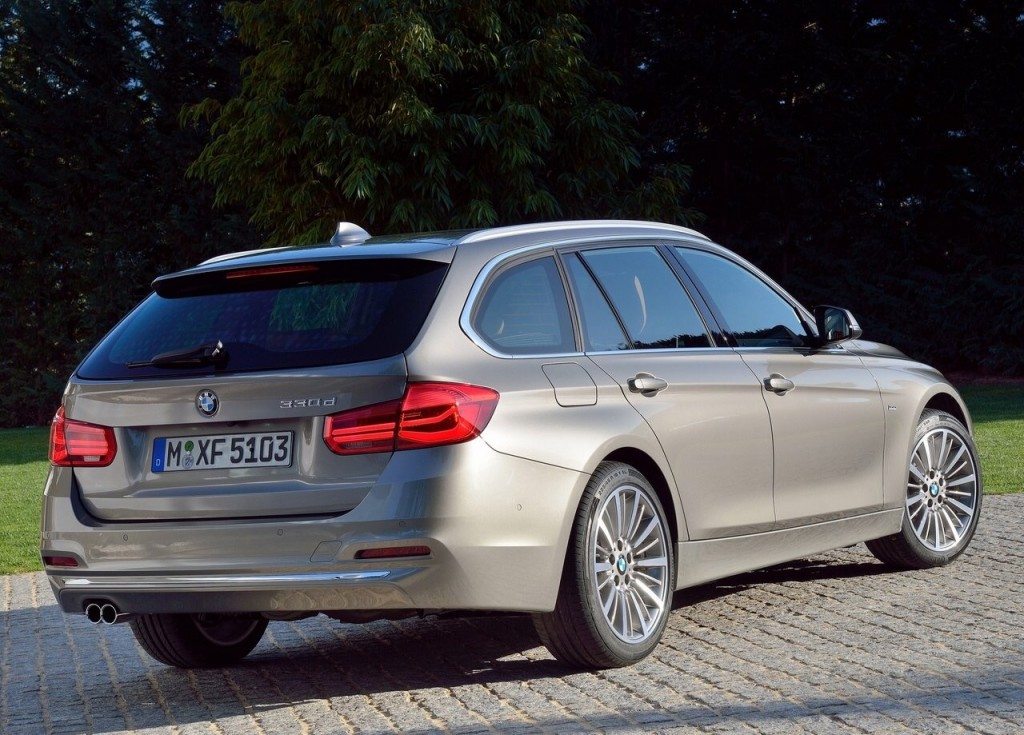BMW has revised its 3-Series sedan and wagon for 2015. The styling changes are minimal, adhering to the “if it ain’t broke don’t fix it” way of thinking. Apparently the changes to the styling have been made to give the 3-Series a lower and wider appearance than before. The main changes can be found in the headlights, taillights, and bumpers.
The revised headlights have clearly taken inspiration from the M4 Iconic Lights Concept, which is no bad thing as it gives the 3-Series some unique daytime running light graphics. The taillights also now feature a two-tier LED light system. The front and rear bumpers have extra “horizontal elements” which probably contribute to the appearance of a wider and lower car.
There’s also changes made to the chassis and suspension, which are now apparently firmer for a sportier drive. The electric power steering system has also been retuned to match the sportier set up. The biggest change for the updated 3-Series though is under the bonnet.
All but the N57 3.0-litre turbodiesel in the 330d have been replaced with newer, more powerful, and more efficient engines. The base 318i gets a 134bhp/98kW 1.5-litre three-cylinder turbo petrol as seen in the Mini and 2-Series Active Tourer. Yes, we now live in a world where there’s a three-cylinder engine in a 3-Series. The 320i and now 330i (replacing the 328i) have four-cylinder turbo engines with different outputs; 181bhp/133kW and 270NM of torque for the 320i, while the 330i produces 248bhp/182kW and 350NM of torque. Joy of joys, there’s still a six-cylinder option available. The 3.0-litre six can be found in the 340i (replacing the 335i) and pumps out 322bhp/236kW and 450NM of torque.
As for the diesels, well some may take solace in the fact the 3-Series doesn’t get the Mini’s three-cylinder diesel. For now all diesels have four or six cylinders. The base diesel in the 316d pumps out 116bhp/85kW. Of course we probably won’t get this model in NZ. Instead the popular 320d now has 188bhp/138kW and 400NM of torque. It’s good for a 0-100 km/h time of 7.2 seconds. An Efficient Dynamics version of the 320d drops the power down to 161bhp/118kW but also manages to drop CO2 emissions to 99g/km. The larger six-cylinder diesel in the 330d remains unchanged (255bhp/187kW, 560NM) but is now cleaner than before.
BMW will also offer a plug-in hybrid dubbed ‘330e’, which combines the turbo four-pot from the 320i with a 107bhp/78kW electric motor driving the rear-wheels through an 8-speed auto. BMW claims it’ll be able to drive in pure electric mode for up to 30 kilometres and speeds up to 120 km/h. For those wanting the ultimate in speed and performance can rejoice, the M3 will also be getting the same updates as the rest of the 3-Series range. That means new headlights, taillights, and a slightly tweaked engine. Expect to see the facelift M3 at the Frankfurt Motor Show.
So BMW clearly thought overhauling the 3-Series’s engines were a better spend of money than a full bodied facelift. I can’t blame them for that as the 3-Series accounts for almost 25% of the BMW worldwide sales, changing the way a car that looks fine as it would’ve been a wasteful exercise. Improving a car that’s already a hit on the hand could only be good. The updated 3-Series will go on sale in Europe in July. The timing does seem funny though, especially as the Jaguar XE has just been launched. Would you pick the 3-Series as your preferred mid-sized exec express or would you prefer one of its rivals?

















































